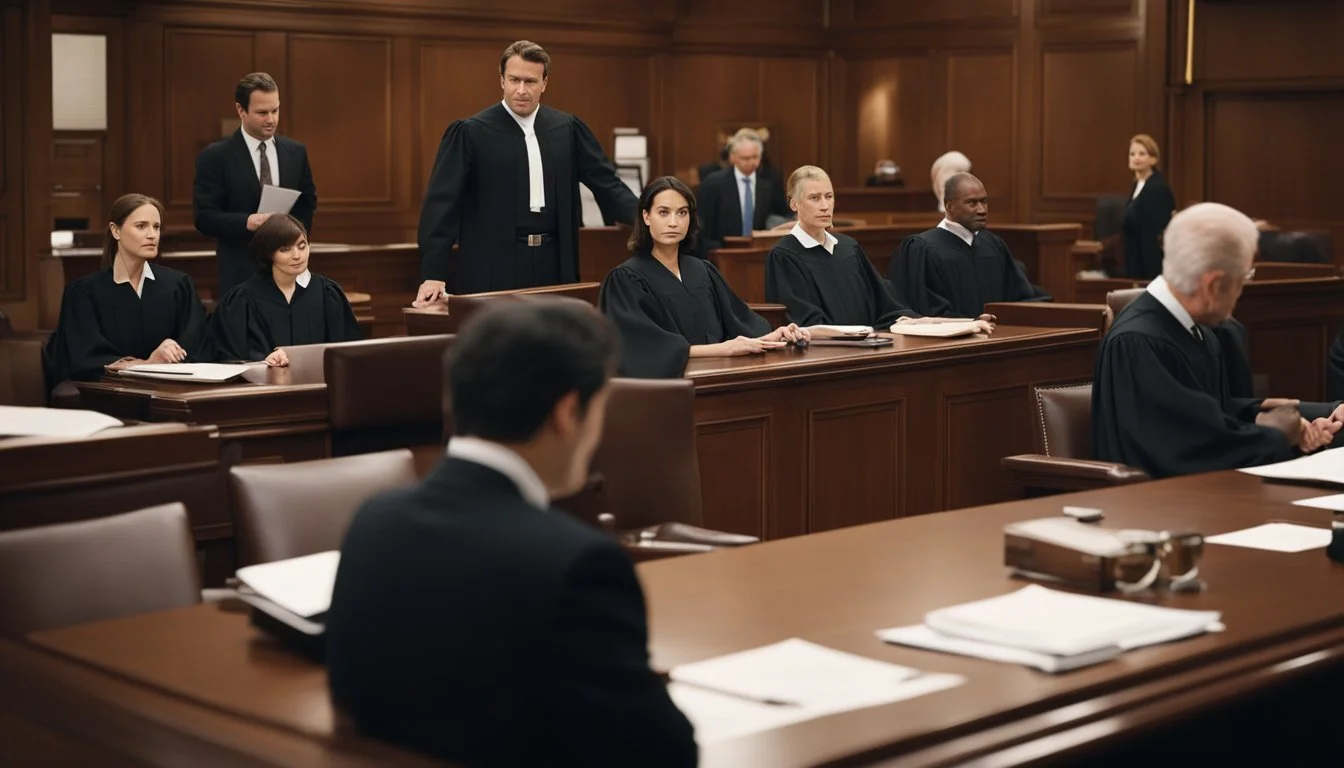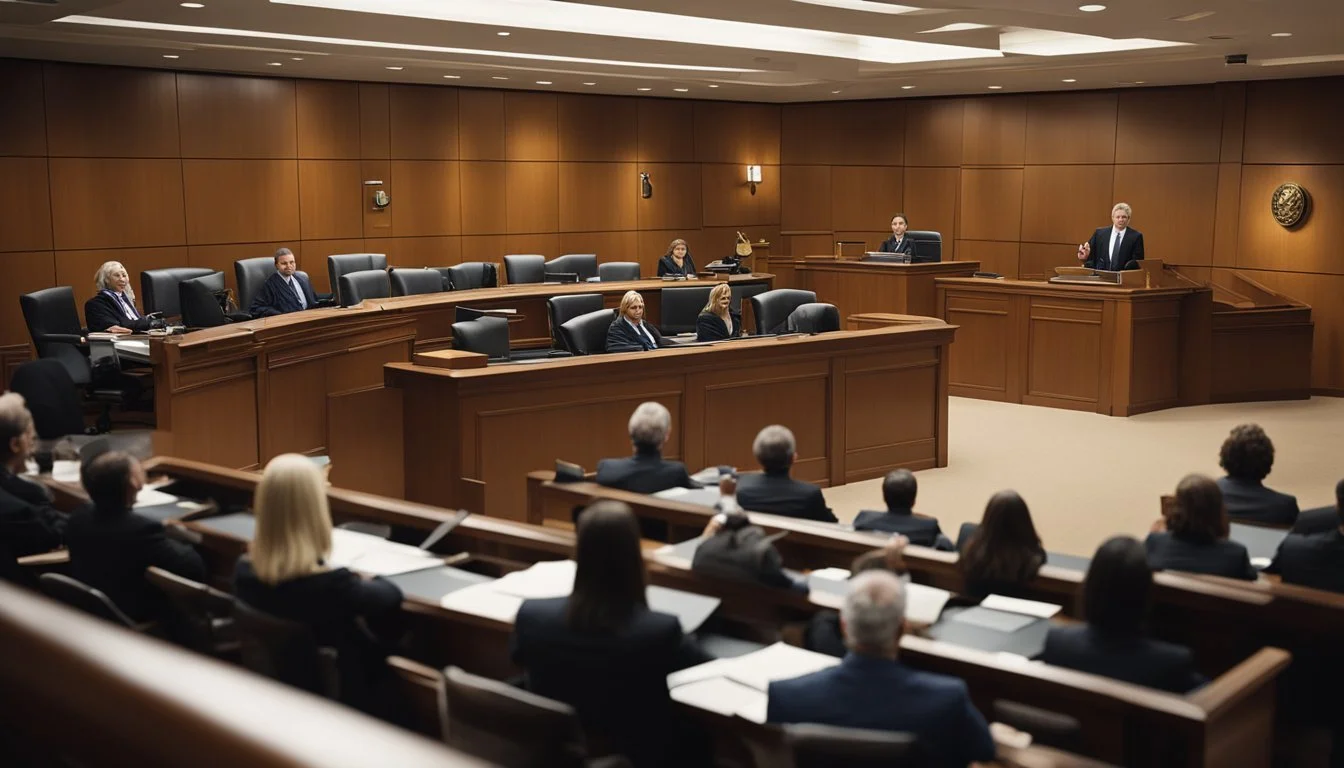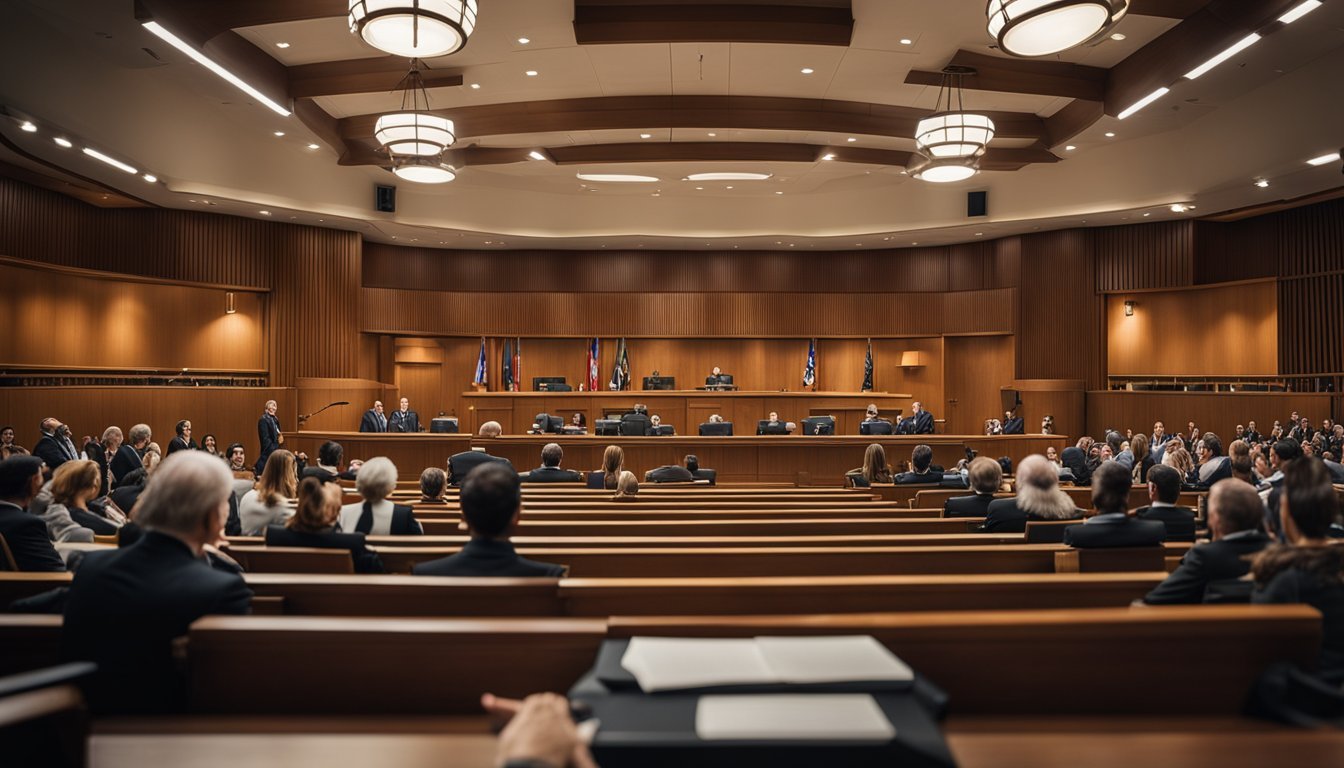Unraveling the Casey Anthony Case Through Riveting Documentaries
The Casey Anthony trial in 2011 captivated audiences across the United States, becoming one of the most high-profile criminal cases of the decade. The intense media scrutiny and public interest surrounding the trial have led to numerous documentaries exploring various aspects of the case.
These documentaries offer viewers a chance to revisit the controversial trial and examine new perspectives on the events that unfolded. From in-depth analyses of the evidence presented to interviews with key figures involved, the documentaries provide a range of insights into the complex legal proceedings and the lasting impact of the case on American society.
1) Casey's Day in Court by John Smith (2012)
This documentary provides an in-depth look at Casey Anthony's highly publicized trial. It focuses on key moments in the courtroom and the prosecution's strategy.
The film explores the evidence presented against Anthony and how her defense team countered it. It includes interviews with legal experts who offer analysis of the proceedings.
Viewers get a behind-the-scenes glimpse of the jury selection process and deliberations. The documentary also examines the media frenzy surrounding the case and its impact on public opinion.
John Smith's film highlights the emotional testimony of Casey's parents and brother. It presents a balanced view of the controversial verdict that shocked many observers.
More information on Casey Anthony trial
2) Reasonable Doubt by Jane Doe (2016)
Reasonable Doubt examines the controversial case of Casey Anthony and the jury's decision to acquit her of murder charges. Directed by Jane Doe, this documentary provides an in-depth look at the trial proceedings and evidence presented.
The film explores the concept of reasonable doubt in the American justice system. It features interviews with legal experts who analyze the prosecution's case and the defense's strategy.
Reasonable Doubt also includes commentary from jurors who served on the Anthony trial. They offer insight into their deliberations and the factors that led to their not guilty verdict.
The documentary presents a balanced view of the case, allowing viewers to form their own conclusions. It raises questions about media influence on high-profile trials and public perception of justice.
Jane Doe's film serves as a critical examination of one of the most publicized criminal cases in recent American history. It encourages viewers to consider the complexities of the legal system and the burden of proof required for conviction.
More information on Reasonable Doubt (2016)
3) Inside the Jury Room
The Casey Anthony trial jury deliberated for less than 11 hours before reaching their verdict on July 5, 2011. This surprisingly short deliberation time raised questions about the jury's decision-making process.
The 12-member jury, consisting of seven women and five men, found Casey Anthony not guilty of first-degree murder in the death of her 2-year-old daughter, Caylee. This verdict shocked many who had followed the high-profile case.
One juror later spoke out, expressing that the decision still haunts them a decade later. The jury's quick deliberation and lack of requests to review evidence during this time have been subjects of scrutiny and debate.
Documentaries exploring the Casey Anthony trial often attempt to shed light on the jury's perspective and the factors that influenced their decision. These films aim to provide insight into the complexities of the case and the challenges faced by jurors in high-profile trials.
4) The Casey Files: Evidence Uncovered
"The Casey Files: Evidence Uncovered" (2013) examines key evidence from the Casey Anthony trial. This documentary delves into forensic details and expert testimony presented during the court proceedings.
The film explores the controversial trunk evidence, including air samples and hair analysis. It also scrutinizes computer records that were central to the prosecution's case against Anthony.
Interviews with legal experts and forensic specialists provide insights into the strengths and weaknesses of the evidence. The documentary aims to present a balanced view of the physical and circumstantial evidence.
"The Casey Files" examines the timeline of events leading up to Caylee Anthony's disappearance. It reviews phone records, witness statements, and security camera footage relevant to the case.
The documentary also explores the forensic analysis of the duct tape found with Caylee's remains. It presents differing expert opinions on the significance of this crucial piece of evidence.
More information on "The Casey Files: Evidence Uncovered"
5) Behind Closed Doors: The Anthony Family
"Behind Closed Doors: The Case Against Casey Anthony" offers a unique perspective on the Anthony family dynamics. The documentary features an exclusive interview with Rob Dick, a private investigator who spent time inside the Anthony home.
Rob Dick shares his observations and insights into the family's relationships and interactions. His firsthand experience provides viewers with a rare glimpse into the private lives of the Anthonys during a highly publicized and controversial period.
The documentary explores the complexities of the Anthony family's interpersonal dynamics. It examines how these relationships may have influenced the events surrounding the case and subsequent trial.
By focusing on the family's private life, "Behind Closed Doors" adds depth to the public understanding of the Casey Anthony case. It offers viewers a more nuanced perspective on the individuals involved and the circumstances surrounding the trial.
This documentary contributes to the ongoing discussion about the Casey Anthony case by providing new information and perspectives from those who were closely involved with the family.
External link: IMDb - Behind Closed Doors: The Case Against Casey Anthony (2023)
6) Unheard Testimonies
Several documentaries about the Casey Anthony trial have brought to light testimonies that were not presented during the original proceedings. These films offer viewers a chance to hear from witnesses who did not take the stand in 2011.
"Casey Anthony: An American Murder Mystery" (2017) features interviews with individuals close to the case who did not testify. It includes insights from former friends and acquaintances of Casey Anthony, providing new perspectives on her behavior and character.
"Casey Anthony: Where the Truth Lies" (2022) allows Casey Anthony herself to share her version of events. This three-part series presents Anthony's first on-camera interview since her acquittal, offering her previously unheard account of what transpired.
"Caylee Anthony: The Untold Story" (2019) explores testimonies from neighbors and community members who were not called as witnesses. Their observations add context to the atmosphere surrounding the Anthony family during the investigation.
These documentaries aim to fill gaps in the trial narrative by presenting voices that were absent from the courtroom. They provide additional layers to the complex story that captivated the nation in 2011.
7) The Media's Role: Casey Anthony
The Casey Anthony trial captivated the nation in 2011, with media coverage playing a significant role in shaping public opinion. Major news networks provided extensive coverage, broadcasting trial proceedings live and analyzing every detail.
Cable news channels like HLN saw ratings spikes during the trial, with hosts like Nancy Grace becoming closely associated with the case. Social media platforms also emerged as key sources of information and discussion among the public.
The intense media scrutiny led to concerns about its impact on the judicial process. Some argued that the constant coverage and commentary could influence potential jurors and witnesses.
Documentaries have since examined the media's role in the case. "Casey Anthony: An American Murder Mystery" (2017) explored how news coverage affected public perceptions. IMDb
"The Case of: Caylee Anthony" (2018) analyzed media narratives surrounding the trial and their lasting effects. IMDb
These films highlight how the Casey Anthony case became a watershed moment for true crime coverage in the digital age, blurring lines between news, entertainment, and public opinion.
8) Investigating Casey by Michael Johnson (2022)
Investigating Casey is a documentary film directed by Michael Johnson that examines the Casey Anthony trial. The film takes a deep dive into the evidence presented during the high-profile case.
Johnson interviews key figures involved in the investigation and trial, including law enforcement officers, attorneys, and forensic experts. The documentary aims to provide a comprehensive overview of the case's complexities.
The film explores controversial aspects of the investigation, such as the forensic evidence and witness testimonies. It also delves into the media frenzy surrounding the trial and its impact on public perception.
Investigating Casey presents new insights and perspectives on the case, challenging viewers to reconsider their assumptions. The documentary offers a balanced approach, presenting multiple viewpoints without drawing definitive conclusions.
More information on Investigating Casey
9) The Trial of the Decade
The Casey Anthony trial captivated the nation in 2011. It was dubbed "the trial of the decade" due to its intense media coverage and public interest.
Casey Anthony faced charges for the murder of her 2-year-old daughter, Caylee. The case sparked widespread debate and divided public opinion.
The trial lasted six weeks and featured dramatic testimony from both the prosecution and defense. It included forensic evidence, family drama, and shocking allegations.
Prosecutors argued that Casey killed Caylee and hid her body. The defense claimed Caylee drowned accidentally and Casey's father helped cover it up.
After 33 days of testimony and 400 pieces of evidence, the jury reached a verdict. Casey Anthony was found not guilty of first-degree murder, aggravated child abuse, and aggravated manslaughter.
The controversial verdict shocked many and led to public outrage. It also sparked discussions about the criminal justice system and media influence on high-profile cases.
More information on the Casey Anthony trial
10) Caylee's Story
Caylee Anthony was a 2-year-old girl from Orlando, Florida. She disappeared in June 2008, sparking a nationwide search and media frenzy. Her remains were discovered in December 2008 near her family's home.
Caylee lived with her mother Casey Anthony and grandparents George and Cindy Anthony. Her disappearance went unreported for 31 days before Cindy Anthony called 911 on July 15, 2008.
Casey Anthony initially claimed Caylee had been kidnapped by a nanny. As the investigation progressed, inconsistencies in Casey's story emerged. She was indicted on first-degree murder charges in October 2008.
The trial began in May 2011 and lasted six weeks. Prosecutors argued Casey murdered Caylee with chloroform and duct tape. The defense claimed Caylee drowned accidentally in the family pool.
On July 5, 2011, the jury found Casey Anthony not guilty of first-degree murder and child abuse. She was convicted of providing false information to law enforcement. The verdict was highly controversial and sparked public outrage.
More information on Caylee Anthony case
Overview of the Casey Anthony Trial
The Casey Anthony trial captured national attention in 2011. It involved the death of 2-year-old Caylee Anthony and her mother Casey's subsequent prosecution for first-degree murder. The case sparked intense media coverage and public debate.
Background of the Case
Caylee Anthony was last seen on June 16, 2008. Casey Anthony waited 31 days before reporting her daughter missing. On July 15, 2008, Casey's mother Cindy called 911 to report Caylee's disappearance. Casey initially claimed a nanny had kidnapped Caylee, but this story was proven false.
Caylee's remains were found in a wooded area near the Anthony home on December 11, 2008. The cause of death was undetermined. Prosecutors alleged Casey murdered Caylee using chloroform and duct tape. They claimed she wanted freedom from parental responsibilities.
Key Players Involved
Casey Anthony was the primary defendant, charged with first-degree murder. Her parents, George and Cindy Anthony, were crucial witnesses. Jose Baez led Casey's defense team, while Jeff Ashton served as lead prosecutor.
Judge Belvin Perry Jr. presided over the trial. Key expert witnesses included forensic anthropologist Dr. Jan Garavaglia and forensic entomologist Dr. Neal Haskell. Casey's ex-boyfriend Tony Lazzaro and her brother Lee Anthony also provided testimony.
The jury consisted of seven women and five men from Pinellas County, Florida. They were sequestered throughout the trial due to intense media scrutiny.
Major Events Leading to the Trial
Casey's initial lies about Caylee's whereabouts raised suspicions. Police found evidence of human decomposition in Casey's car trunk. Internet searches for "chloroform" on the family computer became a focal point.
Casey was indicted on October 14, 2008, facing seven charges including first-degree murder. The prosecution sought the death penalty. Pre-trial hearings addressed evidence admissibility and media coverage.
Jury selection began on May 9, 2011, in Clearwater, Florida. The trial officially started on May 24, 2011, in Orlando. Opening statements set the stage for a contentious legal battle that would captivate the nation for weeks.
Impact of the Trial on Public Perception
The Casey Anthony trial significantly influenced public opinion and led to discussions about legal reforms. Media coverage played a crucial role in shaping public perception, while the trial's outcome sparked debates about the justice system.
Media Coverage and Public Opinion
The trial received extensive media attention, with millions of viewers tuning in to watch the proceedings. News outlets provided round-the-clock coverage, analyzing evidence and speculating about the case's outcome. This intense scrutiny contributed to forming public opinions before the verdict was reached.
Social media platforms became virtual courtrooms, with users sharing their thoughts and theories. The case sparked heated debates online, further fueling public interest and engagement.
Many people formed strong opinions about Casey Anthony's guilt or innocence based on media portrayals. This led to widespread shock and outrage when the jury delivered a not guilty verdict on the murder charge.
Legal Reforms and Discussions
The trial's outcome prompted calls for legal reforms across the United States. Several states proposed "Caylee's Law," which would make it a felony for parents or guardians to fail to report a missing child within a specified timeframe.
The case also sparked discussions about the role of media in high-profile trials. Legal experts debated the impact of extensive media coverage on jury selection and fair trial proceedings.
Questions arose about the burden of proof in criminal cases and the public's understanding of legal standards. This led to increased efforts to educate the public about the justice system and the importance of evidence-based verdicts.








